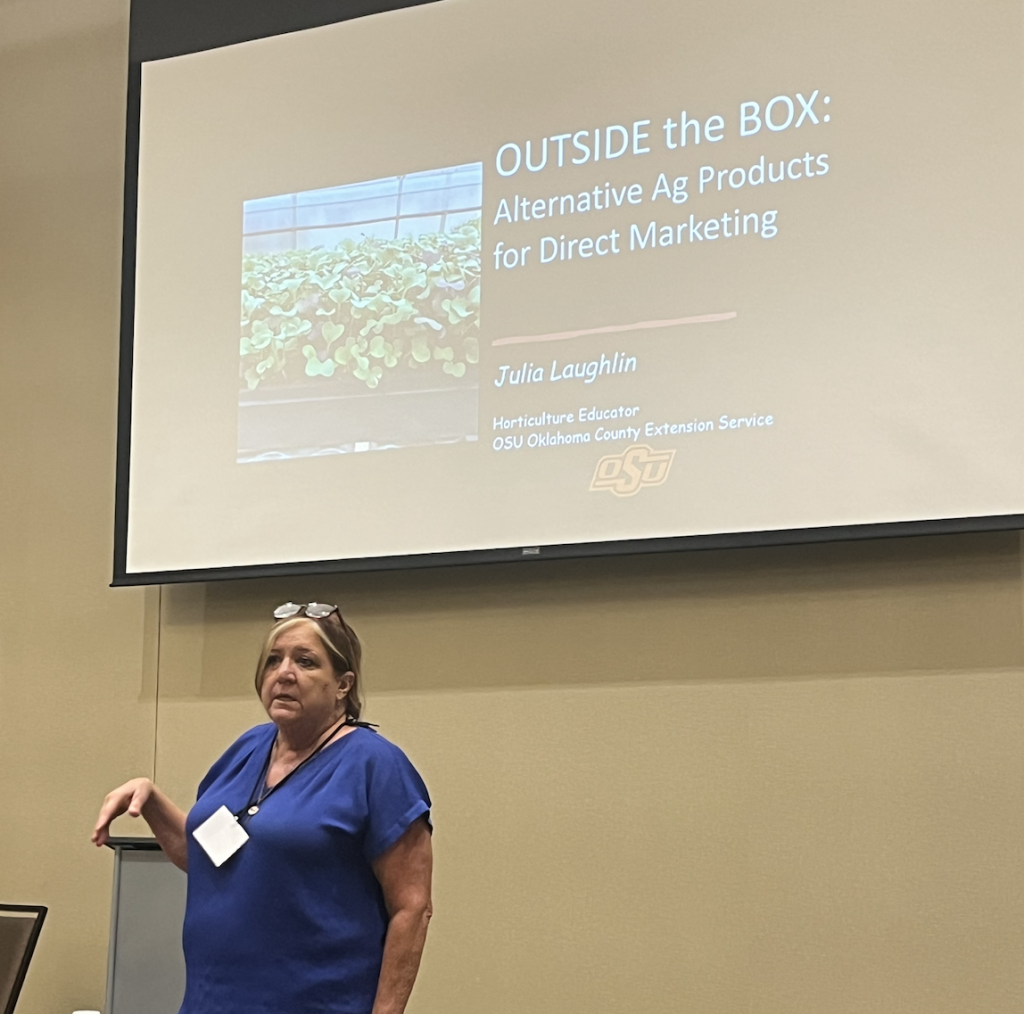
At the Women in Ag Conference in Edmond, Oklahoma, Radio Oklahoma Ag Network Intern, Maci Carter, had the opportunity to talk with Julia Laughlin, Horticulture Specialist at Oklahoma County Extension, after Laughlin’s presentation on Alternative Crops for Direct Marketing.
Together they discussed what direct marketing is, different avenues for producers, crops that will set growers apart, and more.

“This is where a producer is going to sell directly to a consumer instead of having a middleman,” Laughlin said.
Laughlin said some examples of direct marketing include using farmers’ markets or selling directly to chefs at restaurants rather than selling to a corporation grocery store. She disclaimed that it may be harder than it sounds, and often times finding someone to sell for you can be an easier avenue.
“One thing is it can be sold directly to the consumer, which is generally a higher quality for the consumer,” Laughlin said. “But for the vendor or the producer themselves, they’re going to make more money because they can get a full price for the product without going through a second market.”
While direct marketing has its challenges, Laughlin described a few benefits for producers who chose this route, including higher profit margins.
“As far as trends, I think the example is that young people today, the ones that grew up with their mom taking them to the farmers market or whatever, they see the value of local food,” Laughlin said. “There’s a whole different mindset with consumers and in urban areas or in rural areas where it’s like, ‘you know, why not get my tomatoes from the person that I know at the farmers market?'”
Laughlin said that she believes there is an uptick in demand for direct marketing. She said while many producer’s first thought is to sell at a farmers market, today, we are also seeing things like local trading, selling directly to restaurants, selling online, or being a part of a CSA program or subscription that provides a fresh basket of produce from a local producer every week.
“I think people are branching out into things that they can do as well with a greenhouse, like perhaps I do microgreens or shoots, or maybe they’re adding mushrooms or honey,” Laughlin said. “So, it’s neat to see producers diversifying what they’re producing for direct markets.”
Not only are trends changing in how we produce food, but also trends are sweeping through the producer community. Laughlin said diversifying production has become more popular, and she is seeing the addition of unique crops.
“The other thing is probably greenhouse production of transplants,” Laughlin said. “Other non-traditional crops like things that might seem a little bit unusual, like mustards, are not really unusual, but maybe not always available at a farmers market.”
For producers who are interested in marketing their products direct-to-consumer, Laughlin offered some tips.
“Definitely on-farm consultations, if you’re trying to start a market garden,” Laughlin said. “You can talk to your local ag agent in your county, and we even have, in some cases, the availability of state specialists to help you, but there are educational programs throughout the state as well for market gardeners.”
The resources are nearly endless, Laughlin said, as she suggests taking advantage of consultation services, education courses, fact sheets, research, and more through Oklahoma State Extension.














